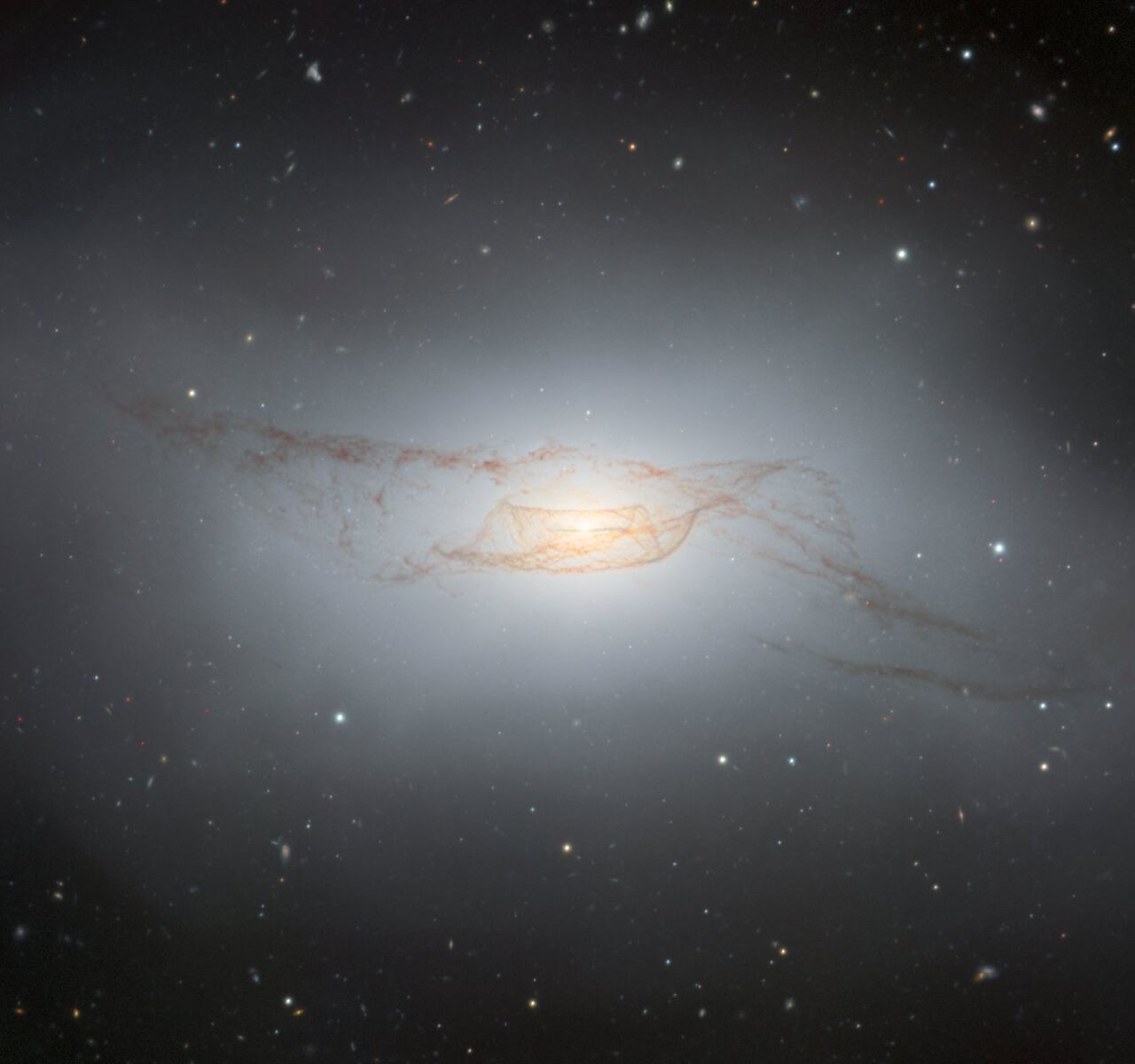NGC 4753 is a prime example of what happens after a galactic merger. It looks like a twisted mess, with dust lanes looping around the massive galactic nucleus. Astronomers long wondered what happened to this galaxy, and with a sharp new image created by the Gemini South telescope, they can finally explain its tortured past.
Officially, NGC 4753 is classified as a “peculiar” galaxy due to its odd appearance. But, like other survivors of galactic mergers and acquisitions, it has probably had several “shapes” throughout its history. Most galaxies are classified as spirals, ellipticals, lenticulars, and irregulars. For this one, astronomers suspect it was formerly a lenticular with a substantial disk and not much in the way of spiral arms. Then, more than a billion years ago, it encountered a neighboring dwarf galaxy and they tangled together. A team led by astronomer Tom Steiman-Cameron at Indian University studied this galaxy in great detail to understand how it got the way it is today. “Galaxies that gobble up another galaxy often look like train wrecks,” he said, ”and this is a train-wreck galaxy.”
NGC 4753 lies in the Virgo Cluster of galaxies, at a distance of about 60 million light-years. It lies within its own smaller galactic collective, called the NGC 4753 group. The galaxy itself appears to have a dark matter shell, and about a thousand globular clusters orbiting its core. Its peculiar dust lanes first caught astronomers’ attention in the 20th Century, although the galaxy itself was discovered by William Herschel in 1784.
Galactic Mergers and Acquisitions
Galaxies have merged throughout the history of the Universe. In the beginning, small shreds of galaxies mixed with their neighbors to form larger ones. That process continued, creating the amazing diversity of galactic forms we see today. When galaxies meet like this, they mingle their stars and material. Gravitational forces sculpt the galaxies, and shock waves induce waves of star birth. This makes galaxies very dynamic objects, changing over time as they meet and mingle with their neighbors.

We see this process playing out across the Universe. Our own Milky Way Galaxy is the result of numerous galactic mergers since it began to form about 13 billion years ago. Each collision brought infusions of new stars and interstellar gas and dust and changed our galaxy’s appearance. Today, the Milky Way is a barred spiral shape, but it began as an indistinct lump of stars, gas, and dust in the early Universe. It continues its merger history in modern times. Astronomers are tracking the action as our galaxy gobbles up several smaller galaxies, including the Sagittarius Dwarf. In addition, the Milky Way and Andromeda galaxies will merge in about five billion years. That process will radically alter their shapes, too, resulting in a vast galaxy known as Milkdromeda.

A Tale of NGC 4753’s Galactic Merger
When NGC 4753 began its cosmic dance, it tangoed with a gas-rich dwarf galaxy. Bursts of star formation triggered by the collision (and influx of gas) injected huge amounts of dust into the region. The galaxy followed a spiraling path into the collision, and that smeared out the dust into the disk. Ultimately, the activity gave the galaxy its peculiar look. “For a long time nobody knew what to make of this peculiar galaxy,” said Steiman-Cameron. “But by starting with the idea of accreted material smeared out into a disk, and then analyzing the three-dimensional geometry, the mystery was solved. It’s now incredibly exciting to see this highly-detailed image by Gemini South 30 years later.”
Steiman-Cameron and his team explain the galaxy’s peculiarity with a phenomenon known as “differential precession”. Precession occurs when a rotating object’s axis of rotation changes orientation, like a spinning top. Differential means that the rate of precession varies depending on the radius. For the dusty accretion disk orbiting the galactic nucleus in this collision, the rate of precession is faster toward the center and slower near the edges. This galactic wobble-like motion results from the angle at which NGC 4753 and its former dwarf companion collided. That resulted in the strongly twisted dust lanes threading through this galaxy.
Implications for Other Peculiar Galaxies
Interestingly, although this galaxy certainly looks weird enough in the Gemini image, it’s all a matter of viewing perspective. We’re looking at it from an edge-on view. That’s how we can spot the dust lanes and other features in the disk.

But, if we could get in a spaceship and fly directly “north” of NGC 4753 to get a “top-down” view, it would look pretty much like a standard spiral galaxy. Now that astronomers know about its galactic merger history, they can do further studies to understand its stellar populations and interactions of those bizarre dust lanes. And, its history may go a long way toward explaining the appearances of other “peculiar” galaxies in the Universe.
For More Information
Gemini South Captures Twisted Dusty Disk of NGC 4753, Showcasing the Aftermath of Past Merger
The Remarkable Twisted Disk of NGC 4753 and the Shapes of Galactic Halos

